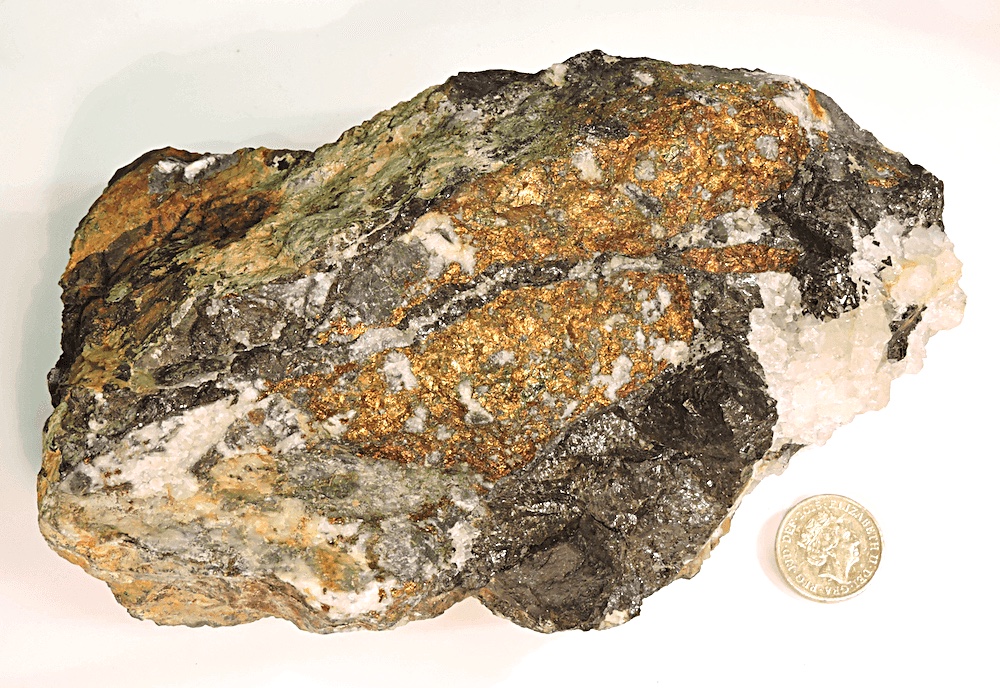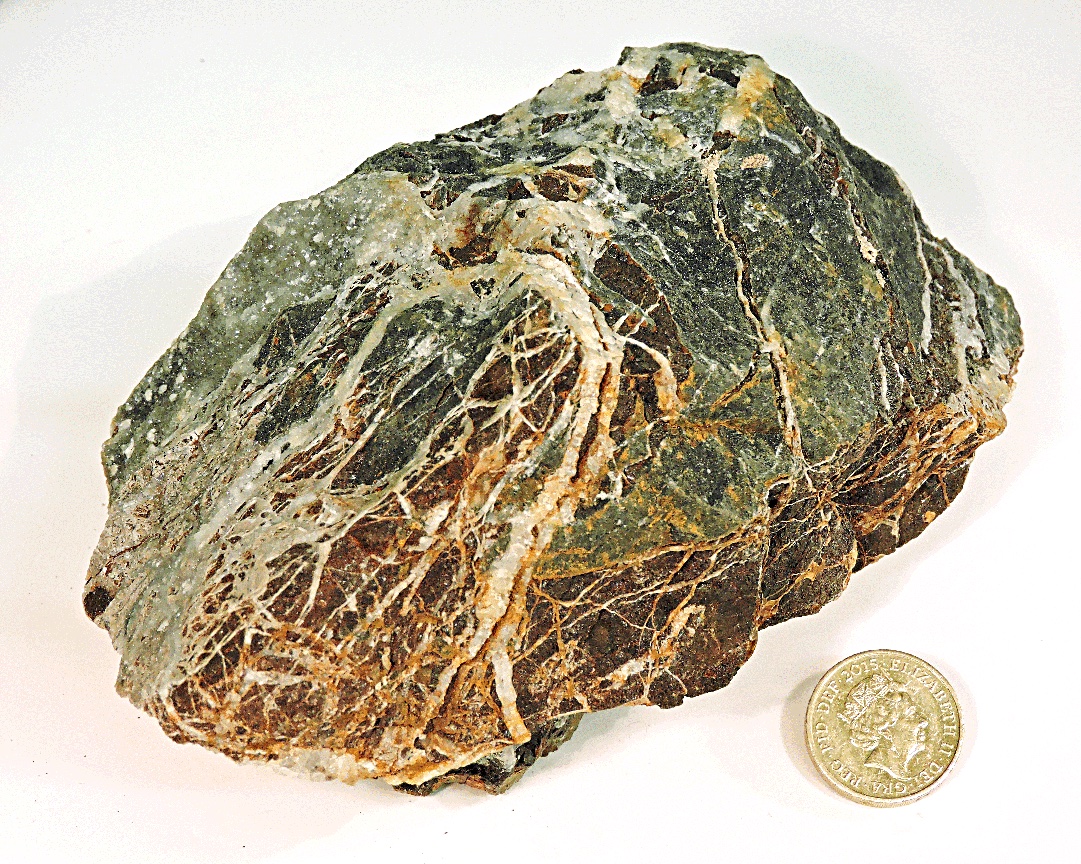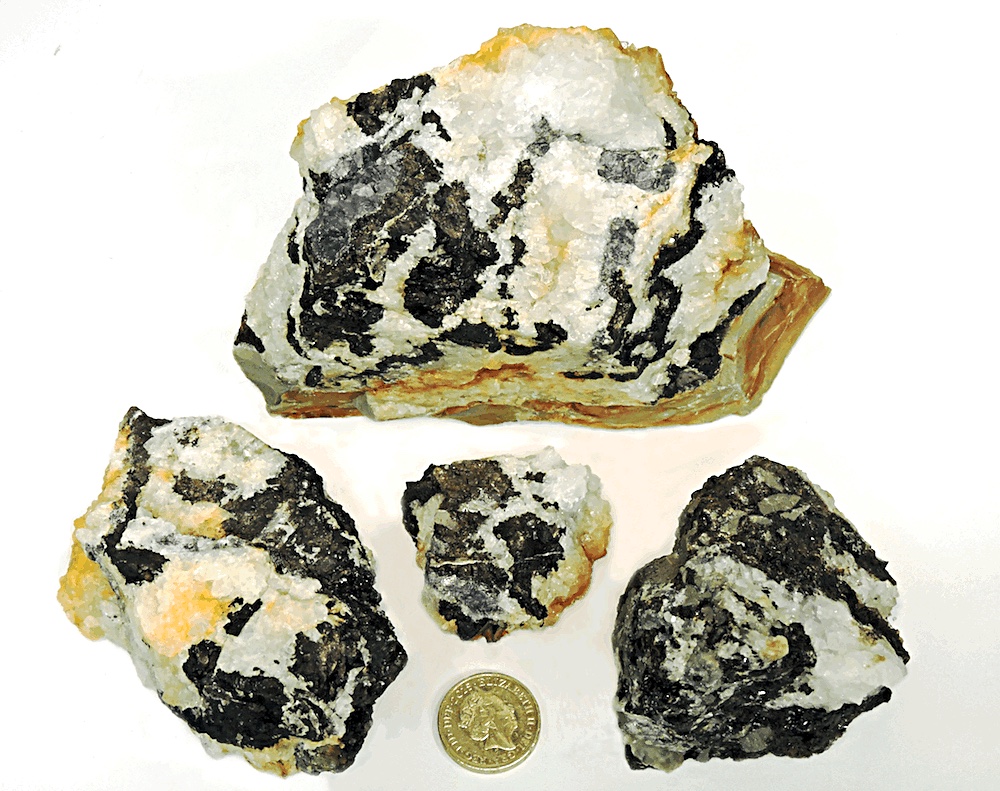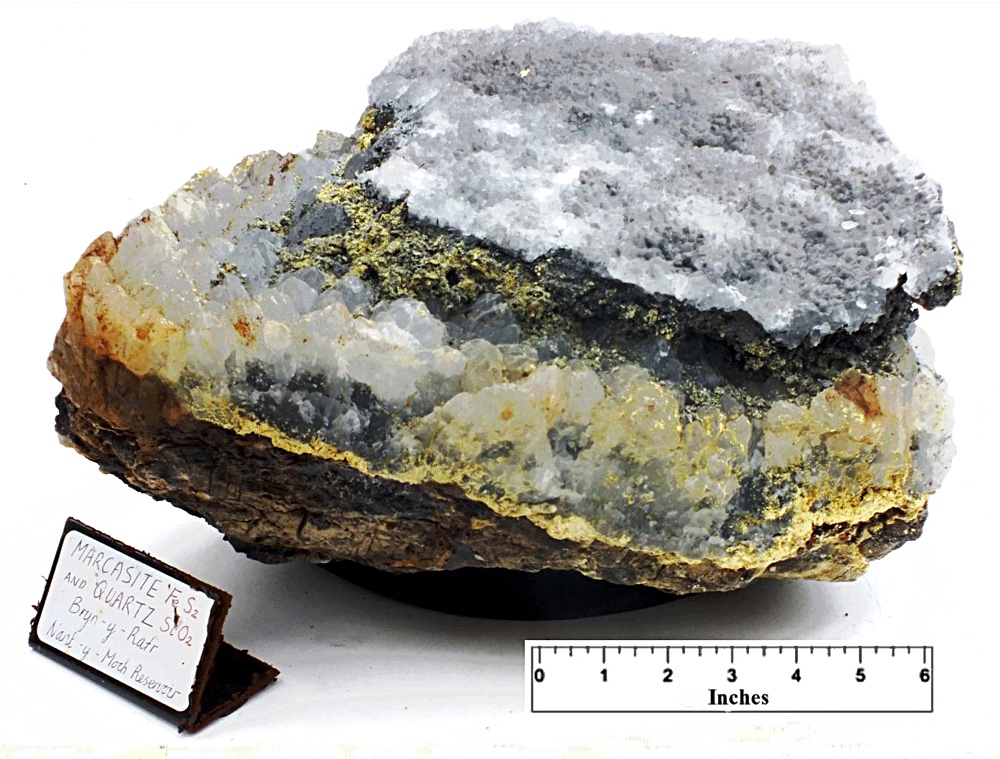
Chalcopyrite, Dylife. (CWO)
Chalcopyrite, Copper iron sulphide, CuFeS2. Dylife mine spoil heaps, Nr. Staylittle, Central Wales Orefield. Although labelled as chalcopyrite, there are also equal amounts of sphalerite and quartz. The chalcopyrite is intermixed with quartz, and varies in colour from gold to bronze. The sphalerite is massive, with just a few obvious crystals, and the quartz is a mass of intergrown crystals. There is also a thin layer of calcite on part of the surface.



